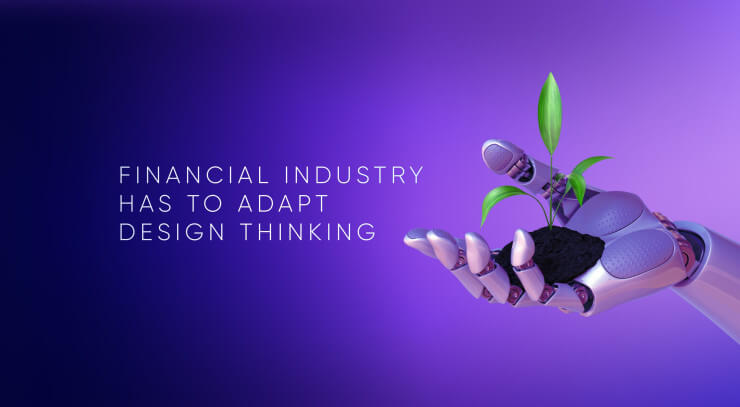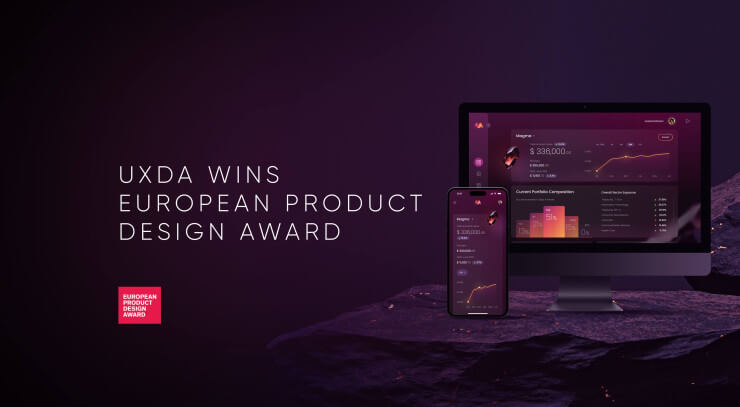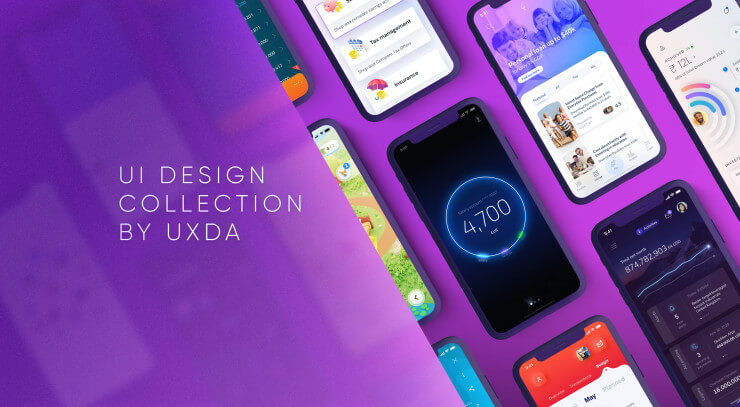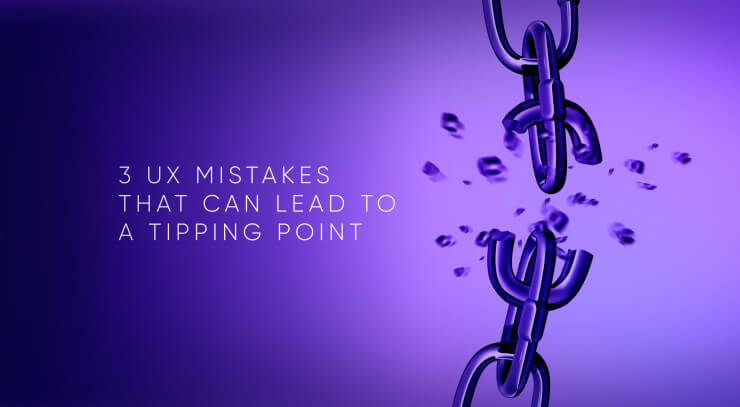Financial companies and banks worldwide are investing heavily to deliver the best possible customer experience and innovation to banking. They recognize the importance of meeting customer needs and staying competitive in a digital financial landscape. Despite these genuine efforts, many banks struggle to achieve the desired results. The culprit? Self-deception—a subtle yet powerful force that undermines progress and stifles innovation.
The Missed Opportunity to Transform Banking Customer Experience
We are constantly hearing that digital product design in finance should be clear, simple, and helpful in solving user issues. All of the financial companies agree but wonder why everyone constantly repeats what appears to be so obvious. Because in reality, this is incredibly difficult to achieve, and agreement and understanding alone are not enough.
I recently encountered a good example. А popular bank has billions in assets and eight-digit profits. They have an extremely extensive and advanced banking service offering with a very professional staff. Moreover, the bank always declares its customer-centric approach.
Several years ago this bank officially announced and released an update to its online banking user interface (UI). The prior update was made a decade ago. Imagine how surprised I was to see only a minor visual redesign of buttons and UI style. Of course, new icons and a flat design modernized the look, but the online service remained the same as it was 10 years ago.
Reviews from the bank customers confirmed my suspicions: all previously detected UX problems were not fixed. A lot of people didn’t even notice any valuable changes because there have been no fundamental improvements in the user experience. The digital information architecture (IA) was still difficult to understand, and the navigation consisted of 90 sections.
Even the most superficial analysis of popular solutions and advanced capabilities in the financial industry was able to help the bank’s management define a clear digital strategy and set the right objectives for modernization. Unfortunately, the revamped banking experience does not meet the technical standards and resource levels expected from the large, innovative, and customer-centered bank. So why did the bank miss this opportunity and why did the huge efforts and investments not lead to a radical improvement in the user experience?
Self-Deception in the Banking Industry
Someone might attribute the above-mentioned failure to management's reluctance to take risks and invest in a radical overhaul—fearing that customers might resist significant product interface changes—or to an internal team's inability to think outside the box and reluctance to implement necessary innovations. But I'm sure that bank management is aware of how a formal approach to product design affects performance. We all see the growing number of tech-savvy customers and their demand for online and mobile banking.
I also believe that these particular bank executives are well aware of potential dire consequences such as imminent market share loss, diminished competitiveness against rivals and neobanks, customer dissatisfaction leading to decreased loyalty, and ultimately a decline in profits. Despite this, we see a strange gap where a superficial approach does not improve usability for millions of users, while management is convinced that everything is done perfectly, adhering to customer centricity in banking.
For some reason, the efforts of a huge team did not lead to the desired result. This points to the worst-case scenario–this exact bank has fallen into a trap of self-deception. Bankers have lost touch with customers and reality, by putting on rose-colored glasses, and convincing themselves that everything is fine and under control.
Self-deception is the act of lying to oneself or rationalizing away the truth to avoid uncomfortable realities. In the context of banking customer experience, it occurs when banks' executives and managers convince themselves that their current strategies are effective, even when evidence suggests otherwise. This disconnect between perception and reality can lead to complacency, missed opportunities, and a failure to address critical customer needs.
Symptoms of Self-Deception in Banking
- Overestimating Customer Satisfaction: Believing that customers are highly satisfied based on outdated metrics, employee reports, or limited feedback channels.
- Mistaking Cosmetic Changes for Innovation: Focusing on minor visual product and marketing updates while neglecting underlying user experience issues.
- Ignoring Customer Feedback: Dismissing genuine concerns and suggestions, reinforcing the belief that existing services are adequate.
- Underestimating Competitors: Overlooking advancements made by leading banks, neobanks, and fintech companies, assuming market position is secure.
- Resistance to Change: Reluctance to implement radical improvements due to fear of disrupting operations or alienating customers.
The Impact of Self-Deception on Banking Customer Experience
The problem is that this case is not the only one. We see numerous banks trying to complete digital transformation, but they are limited to formal declarations and minor redesigns. While those banks are embracing innovation in banking, the core user experience remains full of friction. The digital service information architecture is still convoluted, navigation is cumbersome, and previous user experience problems persist. It's important to understand how to help these financial institutions take off their rose-colored glasses and get the most out of their digital investments.
Perhaps the reason for self-deception for incumbents is a strong market position and an inert in-house bureaucracy. Such conditions do not allow them to see the difference between the traditional approach and user-centered business that focuses on improving the user experience. For example, neo-banking companies are not burdened with “comfort” and deliver customer-centric digital services, providing an example to follow for the entire industry.
I hope that we will not witness this self-deception turning into a catastrophic fall—a fall similar to that of Nokia, whose CEO said, with tears in his eyes, “We didn’t do anything wrong, but, somehow, we lost.”
Despite the aforementioned bank's intentions and efforts to improve, self-deception has enchanted it into equating visual improvements with meaningful innovation. Customers noticed the lack of substantive changes in the new app, leading to frustration and disengagement. This case highlights how self-deception can derail expensive efforts to enhance the progress in banking experience improvement and innovation.
Self-deception doesn't just hinder progress; it can have tangible negative effects on a bank's performance and reputation:
- Erosion of Customer Trust: Failing to address real issues makes customers feel unheard and undervalued.
- Stagnation: Without acknowledging shortcomings, banks may miss opportunities for growth and innovation.
- Cost Increases: Banks that avoid confronting outdated internal processes and legacy systems face higher operational costs, leading to reduced profitability.
- Choosing the Wrong Partners: Partnering with vendors whose digital solutions don’t provide real value to end users results in wasted resources and stifled innovation, while competitors move forward.
- Growth Stagnation: Focusing on the wrong priorities and delaying digital transformation can lead to stunted growth due to slow digital adoption, leaving banks lagging behind fintech disruptors.
- Operational Inefficiencies: Instead of addressing root causes, banks stuck in self-deception tend to search for scapegoats, leading to internal dysfunctions.
- Talent Drain: Failing to acknowledge corporate culture issues or employee dissatisfaction can lead to the loss of key talent.
- Inability to Scale: Overlooking limitations in technology and infrastructure hampers growth potential, especially in fast-growing sectors like fintech.
- Cybersecurity Vulnerabilities: An overconfidence in cybersecurity without regular updates can lead to damaging breaches.
- Investor Disillusionment: Lack of transparency or underperformance due to self-deception erodes investor confidence and can lower stock valuations.
Overcoming Self-Deception: Steps Toward Genuine Innovation
To break free from self-deception and truly enhance the customer experience in banking, banks could take deliberate and reflective actions.
1. Embrace Honest Self-Assessment
Banks need to critically evaluate their services from the customer's perspective.
- Collect Comprehensive Feedback: Utilize surveys, focus groups, and social media listening to gather honest customer opinions.
- Analyze Customer Behavior: Use data analytics to understand how customers interact with services and identify pain points.
- Benchmark Against Competitors: Assess how offerings compare with those of neobanks and fintech innovators.
2. Foster a Culture of Openness and Innovation
Encouraging a corporate culture that values transparency and creativity is essential.
- Empower Employees: Encourage staff at all levels to share ideas and challenge the status quo without fear.
- Invest in Training: Provide teams with the skills and knowledge to innovate effectively.
- Promote Cross-Department Collaboration: Break down silos to facilitate holistic improvements in the banking experience.
3. Prioritize User-Centered Design
Putting the customer at the heart of design processes ensures services meet real needs.
- Implement Design Thinking: Adopt methodologies that focus on empathizing with users, defining problems, ideating solutions, prototyping, and testing.
- Simplify Information Architecture: Streamline navigation and reduce complexity to enhance usability.
- Commit to Continuous Improvement: Regularly update services based on user feedback and emerging trends.
4. Be Willing to Take Calculated Risks
Innovation often requires stepping into the unknown.
- Pilot New Initiatives: Test new features or services on a small scale before full implementation.
- Learn from Failures: View setbacks as learning opportunities rather than reasons to avoid change.
- Stay Agile: Be prepared to adapt strategies quickly in response to customer feedback and market shifts.
5. Maintain a Long-Term Vision
Focus on sustainable growth and customer satisfaction over quick fixes.
- Align Goals with Customer Needs: Ensure strategic objectives center around enhancing the customer experience.
- Monitor Industry Trends: Stay informed about technological advancements and changing customer expectations.
- Invest in Technology: Leverage modern tools and platforms to improve efficiency and service quality.
Conclusion: Reality-Check to Innovate
Self-deception is a silent barrier that can derail even the best-intentioned efforts to enhance the banking customer experience. Recognizing and addressing this challenge is critical for banks aiming to remain relevant and competitive.
Remember that self-deception also has strong roots as a corporate culture phenomenon. According to researchers at the Arbinger Institute, self-deception in companies manifests in several ways that hinder organizational growth and effectiveness:
- Seeing Others as Objects: One of the primary concepts is when leaders and employees view others as obstacles or tools rather than people with their own needs and challenges. This "inward mindset" distorts reality, creating a workplace culture where collaboration suffers, and people feel undervalued.
- Betrayal of Self: This occurs when individuals act contrary to what they know is right. For example, avoiding giving constructive feedback to avoid discomfort can lead to a breakdown in communication and collaboration. The person justifies their inaction, which only compounds the issue.
- Justification of Poor Behavior: Employees often justify harmful or unproductive behaviors by shifting blame onto others. This self-deception leads to internal conflict and prevents the resolution of underlying issues.
- Victim Mentality: When employees or leaders see themselves as powerless in a situation, they disengage from taking initiative or addressing problems, which stagnates both personal and organizational growth.
- Perfectionism and Procrastination: People may set unrealistic goals for themselves, which leads to delays and missed deadlines. This creates a culture of fear and stress within teams, hampering overall productivity.
By recognizing these behaviors and shifting to an "outward mindset"—where individuals see others as people with legitimate needs and concerns—organizations can foster more effective communication, collaboration, and innovation leading to overcoming self-deception in customer experience by reconnecting with their customers and understanding their true needs and desires.
This renewed connection enables financial companies to:
- Deliver personalized experiences by tailoring services to individual customer preferences.
- Build stronger relationships by establishing loyalty through consistent, positive interactions.
- Drive innovation by designing cutting-edge products that set the bank apart in the market.
The journey begins with honest self-reflection and a commitment to genuine innovation. By embracing transparency, prioritizing user-centered design, and fostering a culture open to change, any bank can break free from self-deception. This transformation not only benefits customers but also positions a company for long-term success in an increasingly dynamic digital landscape.
It's time to remove the rose-colored glasses and face the reality of their customer experience. Only then we can deliver the exceptional services that customers desire and deserve.
Get UXDA Research-Based White Paper "How to Win the Hearts of Digital Customers":
If you're ready to elevate your financial offerings and gain a significant competitive edge in the digital landscape, let’s connect! By harnessing the strategic power of financial UX design, we can transform your business into a trusted, emotionally resonant brand that not only stands out but drives demand, success, and lasting customer loyalty.
- E-mail us at info@theuxda.com
- Chat with us in Whatsapp
- Send a direct message to UXDA's CEO Alex Kreger on Linkedin




















